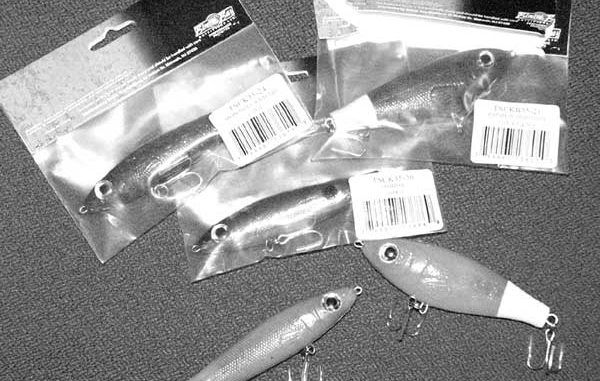
Lacassine Pool will open in late April, and anglers will rediscover a bass fishery that is very much like it used to be.
Taking the Gulf Coast by storm is what a soft-plastic lure from Bimini Bay Outfitters has done since it hit stores in February.But Tsunami’s offering isn’t a typical soft-plastic lure. It’s loaded with cork, hence the name the Cork-Lure, a slow-sinking underwater twitch bait that has been driving speckled trout crazy.
“The only complaint we’ve had so far is the pegs (at fishing tackle stores) are empty,” Jerry Gomby said recently.
Bimini Bay has been keeping air freight lines busy trying to keep up with the demand, he said. Deliveries are concentrated on this region now and, as the fishing season progresses into the upper coastal states with warmer weather, the soft plastics will head to the East Coast.
The Cork-Lure, which comes in two models, including the Cork-Lure Big Boy, is similar to another artificial lure that has been on the market on a limited basis since the late 1990s in the South. But Tsunami took the concept and made it better, according to Gomby, director of development at Bimini Bay based in Mawah, N.J.
“We’ve been able to mass-produce a lure that looks good with top quality production and it works well. We found a way to make it better with holographic detail. The body’s tougher than others,” Gomby said. “As you know, there’s really not much new in fishing and fishing tackle, but this has been a lot of fun to play with and develop.”
The Cork-Lure has a buoyant cork core, highly reflective holographic foil over the core, stainless steel through-wire construction and lifelike 3D eyes, Gomby said. It’s made for the coastal shallow fisheries of the Gulf of Mexico, he said.
The 3 1/2-inch-long soft plastics are armed with Mustad Ultra-Point Hooks. The Cork-Lure Big Boy, which has a deeper body shape, also comes ready to rumble with a steel and glass rattle.
They are pliable but durable. The tail can be bent for customized action.
The Cork-Lure Big Boy and streamlined model Cork-Lure (which weigh 7/8 ounces and 5/8 ounces, respectively) come in chartreuse/silver, chartreuse/pearl, glow/chartreuse, pumpkin/chartreuse, black sparkle/chartreuse, strawberry/white, bone/silver, glow, limetreuse, sea trout and redfish. Those colors have been red-hot the past couple years.
Like all Tsunami artificial lures, Gomby said, Cork-Lures are tank-tested to assure top performance and strike triggering action. Plus, he said, a precision weight transfer design in most models assures improved, tumble-free casting performance and a better balanced swimming action.
Suggested retail price per Cork-Lure is in the neighborhood of $3.99 to $4.99, Gomby said.
Cork-Lures have been fishermen favorites for several months around Venice and to the west along the coast off Texas, Gomby said. He expects the soft-plastic lure to catch on elsewhere in Louisiana as the speckled trout fishing season heats up.
Why? Try it. Cast and let it sink slowly for a few seconds and just twitch the rod tip, which causes the Cork-Lure to dart to either side to mimic an injured baitfish. As you’ll find, s-l-o-w twitches work best, but a twitch-pause-twitch retrieve also can trigger strikes.
Try adding a slight bend in the through-wire behind the cork core to change the action. Bend the tail up, and the Cork-Lure climbs toward the surface on each twitch. Bend it down and the soft-plastic lure will dive. Add a nail or wire weight to the nose, and it’ll go even deeper.
“It can be used as a twitch bait underwater or on the surface. If you’re quick enough, you can start it walking the dog on the surface,” Gomby said. “It seems the guy who thinks about how whatever species he is after attacks a bait, he can apply to this thing.”
For more information or to order Cork-Lures and other Tsunami products, such as Swim Shads, Paddle Tail Minnows, Walking Minnows and Trout Maulers, call Folsum sales manager Dan Murff at 504-733-3142.


